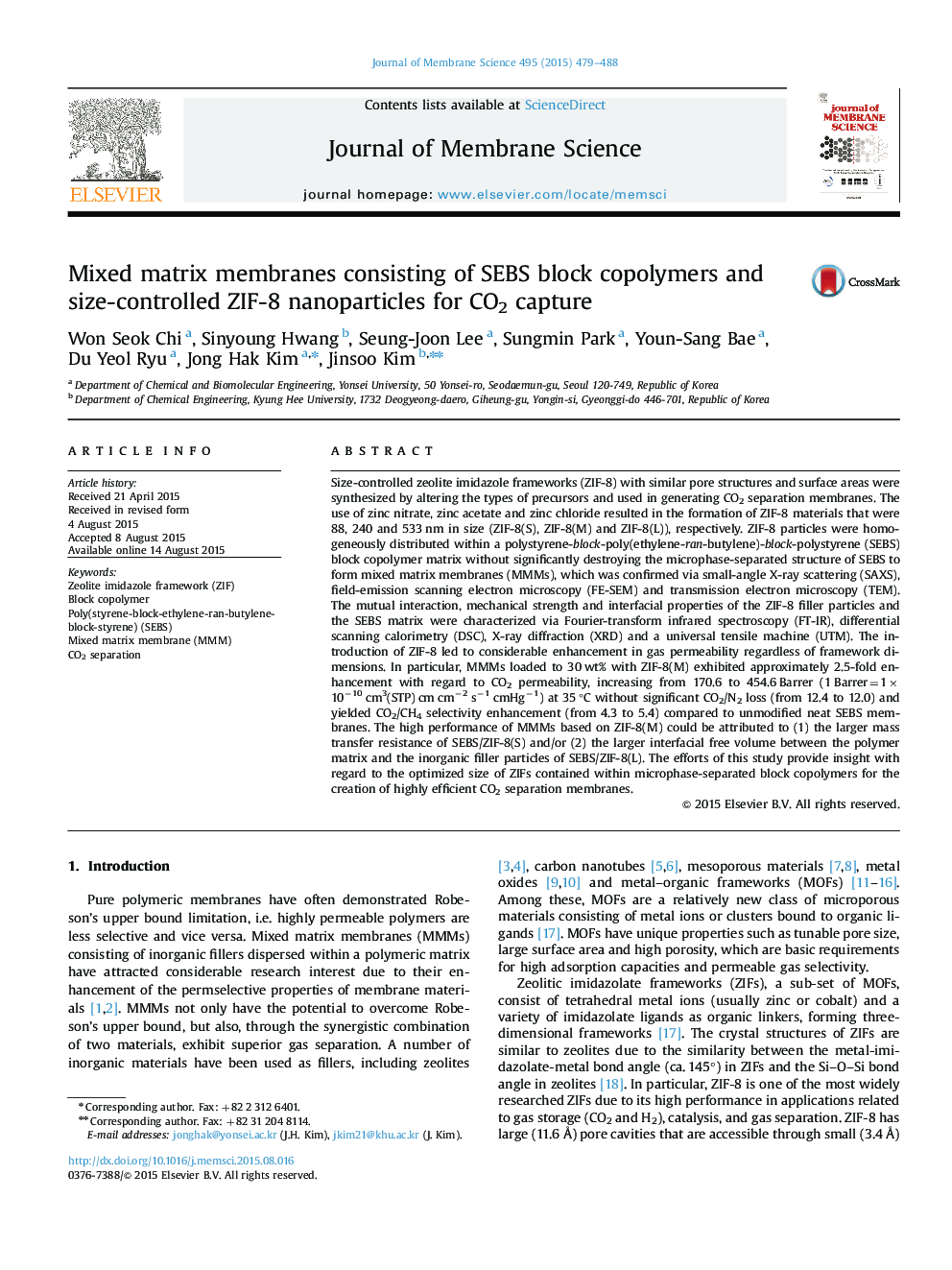| کد مقاله | کد نشریه | سال انتشار | مقاله انگلیسی | نسخه تمام متن |
|---|---|---|---|---|
| 632738 | 1456004 | 2015 | 10 صفحه PDF | دانلود رایگان |

• Size-controlled zeolite imidazole frameworks (ZIF-8) were synthesized.
• ZIF-8 were distributed within SEBS block copolymer without macrophase separation.
• Best performance was obtained from membrane of SEBS/ZIF-8(M) with middle size.
• CO2 permeability increased from 170.6 to 454.6 Barrer without significant CO2/N2 selectivity loss.
Size-controlled zeolite imidazole frameworks (ZIF-8) with similar pore structures and surface areas were synthesized by altering the types of precursors and used in generating CO2 separation membranes. The use of zinc nitrate, zinc acetate and zinc chloride resulted in the formation of ZIF-8 materials that were 88, 240 and 533 nm in size (ZIF-8(S), ZIF-8(M) and ZIF-8(L)), respectively. ZIF-8 particles were homogeneously distributed within a polystyrene-block-poly(ethylene-ran-butylene)-block-polystyrene (SEBS) block copolymer matrix without significantly destroying the microphase-separated structure of SEBS to form mixed matrix membranes (MMMs), which was confirmed via small-angle X-ray scattering (SAXS), field-emission scanning electron microscopy (FE-SEM) and transmission electron microscopy (TEM). The mutual interaction, mechanical strength and interfacial properties of the ZIF-8 filler particles and the SEBS matrix were characterized via Fourier-transform infrared spectroscopy (FT-IR), differential scanning calorimetry (DSC), X-ray diffraction (XRD) and a universal tensile machine (UTM). The introduction of ZIF-8 led to considerable enhancement in gas permeability regardless of framework dimensions. In particular, MMMs loaded to 30 wt% with ZIF-8(M) exhibited approximately 2.5-fold enhancement with regard to CO2 permeability, increasing from 170.6 to 454.6 Barrer (1 Barrer=1×10−10 cm3(STP) cm cm−2 s−1 cmHg−1) at 35 °C without significant CO2/N2 loss (from 12.4 to 12.0) and yielded CO2/CH4 selectivity enhancement (from 4.3 to 5.4) compared to unmodified neat SEBS membranes. The high performance of MMMs based on ZIF-8(M) could be attributed to (1) the larger mass transfer resistance of SEBS/ZIF-8(S) and/or (2) the larger interfacial free volume between the polymer matrix and the inorganic filler particles of SEBS/ZIF-8(L). The efforts of this study provide insight with regard to the optimized size of ZIFs contained within microphase-separated block copolymers for the creation of highly efficient CO2 separation membranes.
Figure optionsDownload high-quality image (273 K)Download as PowerPoint slide
Journal: Journal of Membrane Science - Volume 495, 1 December 2015, Pages 479–488